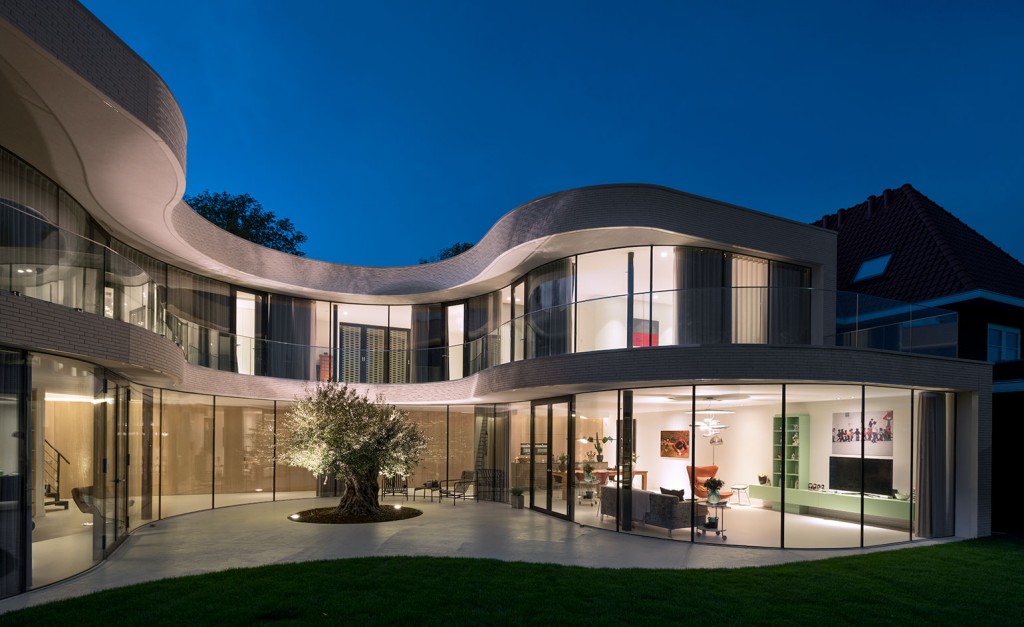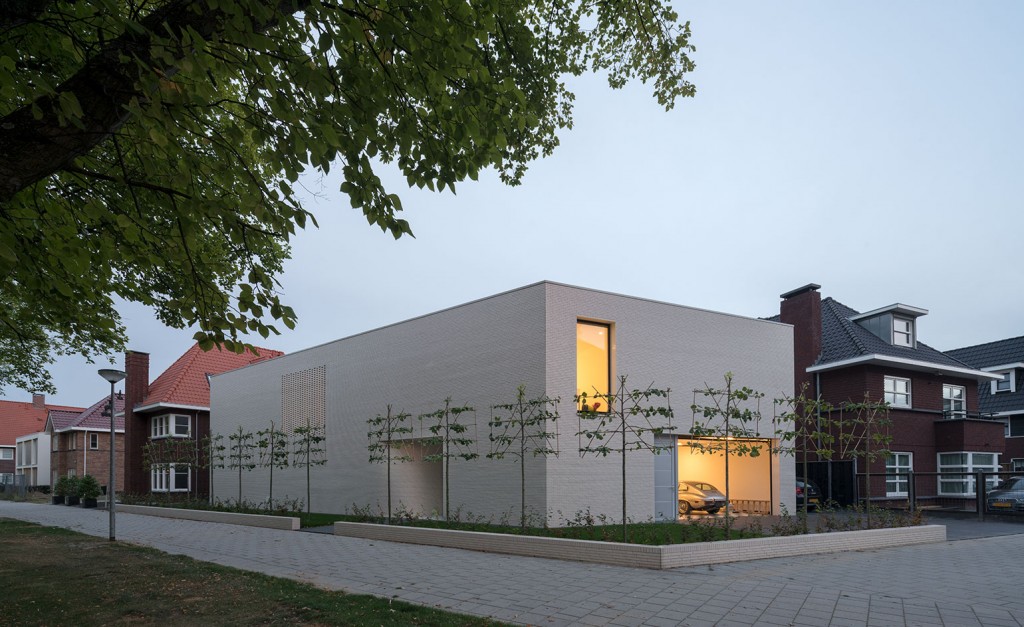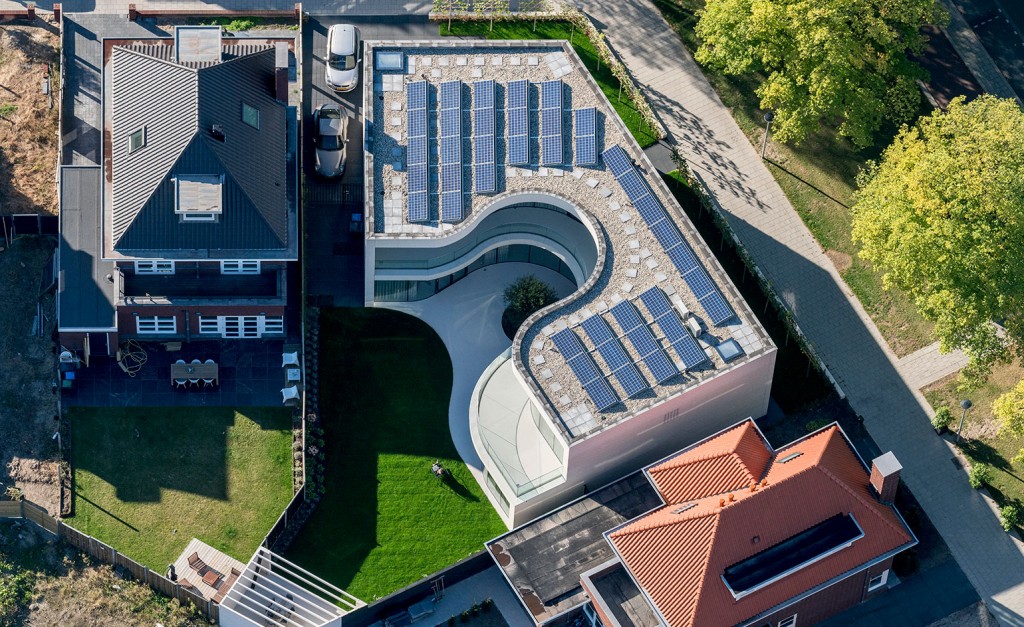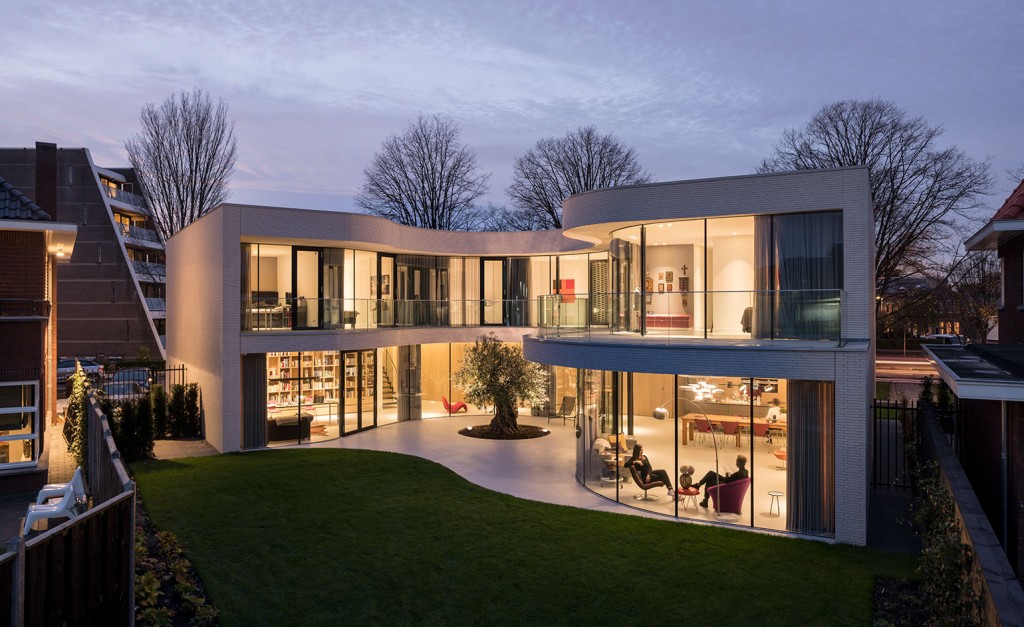As a designer, I have seldom (if ever) included a curved facade, particularly composed of curved glass, in any residential design. I tend to find it, for the most part, a self-indulgent design move on the part of architects, for the simple reason that it costs an arm and a leg and more often than not, doesn’t achieve anything that more regular planes and geometries can. However, this house is an exquisite exception to that rule…
The house, just outside Rotterdam, was designed for a friend by a founding partner of local architectural firm MVRDV. Situated on a double plot in a 1930’s enclave of Schiedam, the city required that the design reflect the white-stucco vernacular architecture of the neighborhood. Instead of taking reference from existing houses in the neighborhood, the designer developed a new template for Dutch urban living. The crafted street facade of horizontal brick in chalky white, provides a simple and unobtrusive elevation to those on the outside. In contrast, the more private south-facing rear of the house, with banks of full-height glazing, utilizes a fluid shape that caves in on itself, to focus sight-lines inward. The result is that in the most elegant way, every room has a visual connection to the rest of the house – and to the olive tree planted in the courtyard. But most cleverly, the strategic concave shape of the glass walls mean that these windows welcome the sun throughout the day without welcoming attention from the neighbours…



